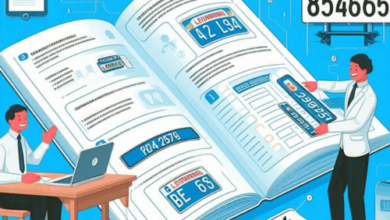
Microlearning is an educational approach that delivers content in small, bite-sized units, making it ideal for busy individuals seeking quick, focused learning experiences. Here are 30 key points, including the pros and cons, related to the rise of microlearning:
The Rise of Microlearning: Bite-Sized Education for Busy Lives:
Pros:
- Time Efficiency: Microlearning is designed to fit into busy schedules, making it time-efficient.
- Flexibility: Learners can access microlearning content anytime, anywhere, and on various devices.
- Focused Learning: It offers focused, topic-specific content, minimizing cognitive overload.
- Improved Retention: Short, targeted lessons can enhance information retention.
- Engagement: Microlearning often employs interactive, engaging formats to maintain interest.
- Accessibility: It’s accessible to a wide range of learners, including those with busy lives.
- Cost-Effective: It can be more cost-effective than traditional, lengthy courses.
- Customization: Microlearning can be customized to suit individual learning needs.
- Skills Development: It allows for the development of specific skills or knowledge areas.
- Feedback Loop: Quick assessments in microlearning provide instant feedback.
- Learning on the Go: Learners can engage in microlearning during commutes, breaks, or downtime.
- Higher Completion Rates: Microlearning modules are more likely to be completed due to their brevity.
- Micro-credentials: Microlearning can lead to micro-credentials or badges.
- Adaptive Learning: It can adapt to individual progress, tailoring content to the learner.
- Supports Lifelong Learning: Ideal for continuous learning and skill maintenance.
- Professional Development: Employees can engage in microlearning for professional growth.
- Just-in-Time Learning: Microlearning provides on-the-spot solutions when needed.
- Cross-Training: Organizations can use microlearning for cross-training employees.
- Behavior Change: Short lessons can encourage behavioral change more effectively.
- Task-Specific: Ideal for teaching task-specific skills.
- Gamification: Microlearning can incorporate gamification elements for added engagement.
- Global Learning: Microlearning can be translated and adapted for global audiences.
- Immediate Application: Knowledge gained in microlearning can be immediately applied.
- Digital Literacy: It promotes digital literacy and familiarity with e-learning tools.
- Reinforcement: Microlearning can reinforce prior learning and knowledge.
- Adaptable to Various Industries: Suitable for diverse industries, from healthcare to tech.
- Minimal Disruption: Employees can engage in microlearning without significant work disruptions.
- Progress Tracking: Progress in microlearning modules can be easily tracked.
- Promotes Self-Directed Learning: Encourages self-directed learning and autonomy.
- Fast Content Updates: Content can be updated quickly to reflect changes in a field.
Cons:
- Content Depth: Microlearning may lack the depth of traditional, longer courses.
- Lack of Context: Some topics require a broader context for full comprehension.
- Over-fragmentation: Excessive microlearning units can lead to over-fragmented knowledge.
- Limited Interaction: Some complex topics may require more interaction and discussion.
- Skill Development Challenges: Complex skills may be harder to develop in microlearning.
- Learning Style Compatibility: Not all learners may thrive in microlearning environments.
- Limited Application: Some topics may be challenging to cover effectively in microlearning.
- Quality Control: Maintaining content quality in microlearning can be a challenge.
- Overemphasis on Quick Wins: Microlearning may favor quick, superficial knowledge acquisition.
- Risk of Shallow Learning: Learners may not delve deep into topics due to brevity.
- Technical Challenges: Accessing microlearning content may be difficult for some learners.
- Limited Collaboration: Reduced interaction and collaboration opportunities compared to traditional classrooms.
- Knowledge Silos: Microlearning content may remain isolated from the broader curriculum.
- Certification Challenges: It may not lead to traditional degrees or certifications.
- Learning Burnout: Overconsumption of microlearning can lead to burnout.
- Overemphasis on Quantity: Quantity of microlearning modules may overshadow quality.
- Content Repetition: Content may overlap or be repetitive across microlearning units.
- Learner Accountability: Some learners may struggle with self-regulation in microlearning.
- Depersonalization: Reduced human interaction may lead to depersonalization.
- Content Fragmentation: Microlearning units may not flow seamlessly from one to the next.
- Not for All Topics: In-depth, theoretical topics may not be suited to microlearning.
- Technology Requirements: Access to technology and digital skills are necessary for microlearning.
- Accessibility Challenges: Not all learners have equal access to microlearning resources.
- Teacher Training: Educators may require training to design effective microlearning content.
- Initial Resistance: Resistance to shifting from traditional learning models to microlearning.
- Cultural Barriers: Cultural attitudes and preferences may influence the adoption of microlearning.
- Limited Assessment: Assessing learning outcomes may be more challenging in microlearning.
- Privacy Concerns: Data privacy and security concerns may arise in online microlearning.
- Information Overload: A large volume of microlearning content can lead to information overload.
- Lack of Incentives: Learners may lack incentives to complete microlearning units.
In conclusion, microlearning has gained popularity for its efficiency and flexibility, but it’s not without its challenges. Finding the right balance between brevity and depth, ensuring content quality, and addressing the diverse needs and preferences of learners are essential for the successful implementation of microlearning in education and training.




